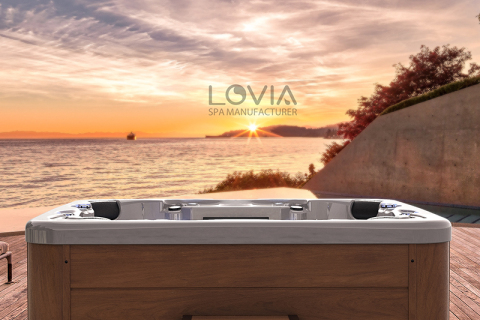
- Home
- >
News
The tub's plumbing system is a complex network through which water circulates. If the plumbing isn't cleaned promptly or the filtration system malfunctions during use, water can accumulate in the tub, breeding grounds for bacteria and mold.
A spa jacuzzi tub offers several benefits for the skin: 1. Promotes blood circulation and improves skin metabolism 2. Helps cleanse the skin and open pores 3. Relieves dry skin and maintains moisture 4. Relieves skin fatigue and relaxes the skin 5. Promotes skin repair and regeneration
Technically, swim spa tubs can be installed underground, but only if they meet a series of strict design, construction, and maintenance requirements. This installation method can improve overall aesthetics, spatial integration, and safety (especially for homes with children or elderly residents), but it also presents more engineering challenges.
According to product catalogs and manufacturer specifications, a standard-sized (approximately 2200mm × 2200mm × 950mm) five-person spa hot tub with mid-to-high-end features typically weighs between 230 kg and 400 kg empty. Some high-end models with thicker insulation or integrated sound systems can even weigh up to 500 kg.
Our 20 experts and 200 workers perform strict inspections at every stage of production, guaranteeing that buyers receive high quality spas at low factory prices. Unlike some suppliers that compromise quality for cheap costs, we balance both by offering discounted wholesale purchasing options without lowering standards.
For a home user, the actual cost of a daily hot water massage and regular maintenance is approximately $9 to $16 per day, a moderately affordable luxury experience. For commercial spaces or high-end spas, the cost of a single day's service can reach $136 to $232 per day, or even higher, due to increased labor, facility depreciation, and frequent cleaning.
A spa hot tub with a seat provides a natural sitting position. Compared to designs without a seat, which require full reclining or partial reclining, a spa hot tub with a seat reduces the user's effort and eliminates the need to constantly support their weight with their hands.
The data shows that the primary market for spa hot tubs is concentrated in developed countries or regions with high spending power and a high concentration of single-family homes. While the US's 1.8% may not seem high, considering its population of approximately 330 million, this means approximately 5.94 million people own a spa hot tub.
When adding chemical shock agents directly to a whirlpool spa hot tub, if the water is stagnant, the concentration of the chemical can be excessively high in certain areas, leading to corrosion of the tub, discoloration of the materials, and the release of irritating gases into the air. The strong water flow and bubble agitation created by operating an aerator can:
Substances that should not be mixed with chlorine in swim spas include: 1. Acidic chemicals (e.g., dry acid, hydrochloric acid) 2. Ammonia-containing compounds (e.g., ammonia, certain detergents) 3. Other oxidizing or reducing agents (e.g., hydrogen peroxide, chlorine dioxide) 4. Grease (e.g., skincare, lotion, hairspray residue) 5. Dirt and high concentrations of organic matter (e.g., urine, sweat, cosmetic residue) 6. Metal ions (e.g., iron, copper, manganese) 7. Fragrance or coloring additives
"Air Lock" When filling a spa hot tub, air can easily become trapped in the water pipes or pump chamber, especially when refilling after completely draining the tub. If the air isn't completely expelled, it forms an "air pocket" that blocks the water flow path, preventing water from reaching the showerheads even when the pump is turned on.
The constant temperature, oxygen-rich, and circulating water in a spa jacuzzi tub creates an ideal breeding environment for bacteria, fungi, and algae. After forming a biofilm on the inner walls of the tubing, bacteria trap organic matter in the water and continue to reproduce, gradually accumulating into sludge.












